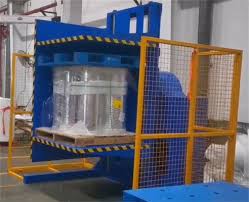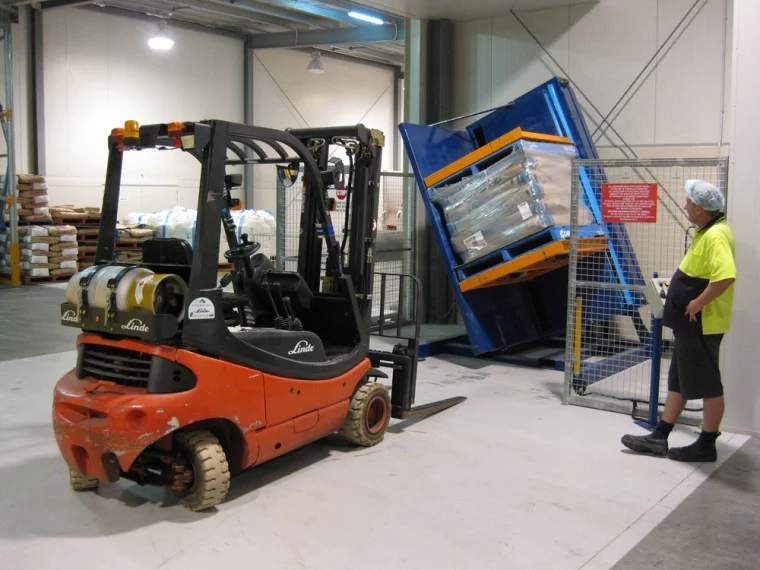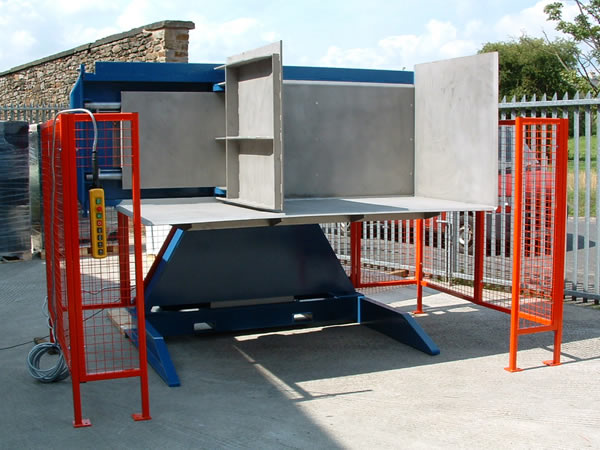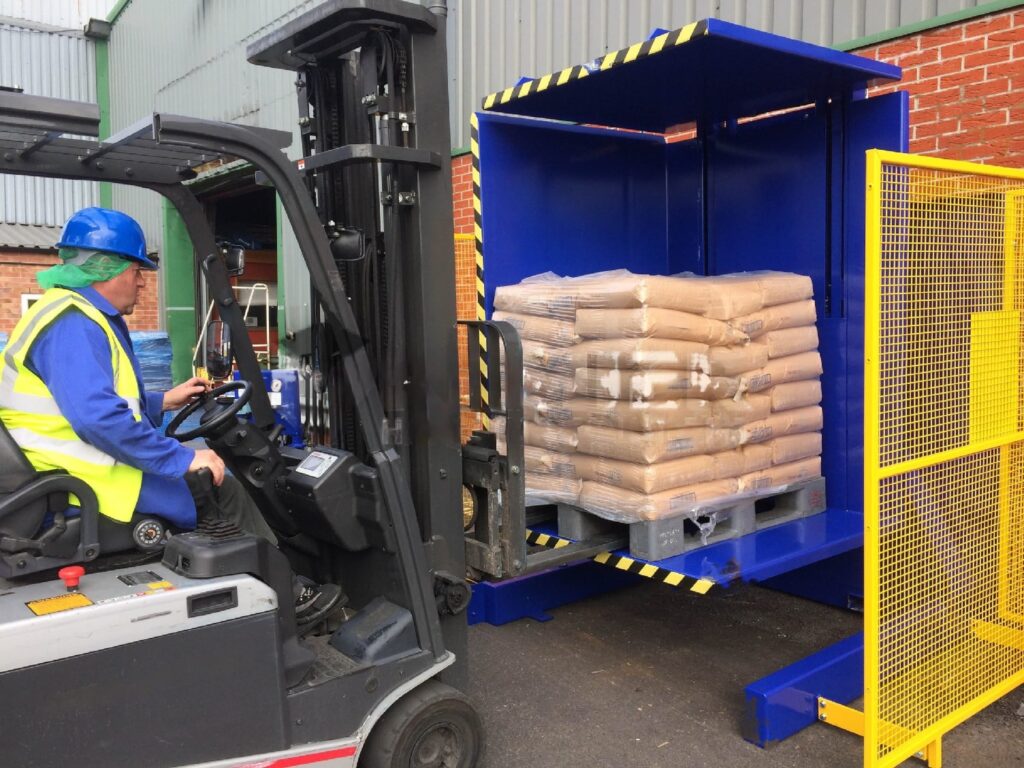Is Your Canada Factory Struggling with Pallet Standard Switching Between US and EU Specs? Try a Pallet Changing Machine
Your production line is running smoothly. Your team is hitting its targets. But then, the shipment gets held up. The reason? Your products are on North American 48"x40" pallets, but your European customer requires 1200x800mm Euro-pallets. Now you're facing costly delays, manual labor to restack everything, and the risk of product damage. This single, simple problem at the end of your process can create a huge bottleneck, erasing efficiencies you worked so hard to build. I've seen this frustration in many factories, and it’s a drain on time, money, and your reputation.
Yes, a pallet changing machine is the most effective solution for Canadian factories dealing with different US and EU pallet specifications. This equipment automates the transfer of your entire product load from one pallet type to another in a single, swift operation. It eliminates slow and risky manual restacking, ensures your shipments meet international standards, prevents costly delays, and protects your products from damage. It is a direct investment in a smoother, faster, and more profitable supply chain.

Investing in equipment is a big decision. I know. As an engineer who built my own factory, I scrutinize every purchase for its return on investment. You might think a pallet changer is just another machine, but it’s more than that. It’s a solution to a problem that has ripple effects across your entire operation. It impacts your labor costs, worker safety, product integrity, and shipping schedules. Let's break down exactly how this machine solves the very real challenges faced by Canadian exporters and why it's a strategic move, not just an operational one.
How does a pallet changer solve the US vs. EU standard mismatch?
You have a full load of valuable goods stacked perfectly on a pallet, ready to go. But it's the wrong kind of pallet for its final destination. Your team now has to break down the entire stack, piece by piece, and rebuild it on a new pallet. This manual process is not just slow; it's a moment where products can be dropped, dented, or contaminated. Every minute your team spends on this task is a minute they are not doing something more valuable. This inefficiency at the final stage of your production is a hidden cost that eats directly into your profits.
A pallet changer solves this problem by mechanizing the entire transfer process. It securely clamps your product load, rotates or pushes it, and allows for a quick swap of the pallet underneath. The entire operation often takes less than a minute. This means your goods are transferred from a North American standard pallet to a Euro-pallet without being touched by human hands. The stack integrity is perfectly maintained, and the process is fast, efficient, and safe.

Dive Deeper: The Mechanics and Supply Chain Impact
Let's look closer at the practical details. The difference between pallet types is more than just size. It affects everything from container loading density to compatibility with warehouse racking systems in Europe.
Pallet Specification Differences
Understanding these differences is key to seeing why a simple swap is so critical. A shipment arriving on the wrong pallet can be rejected or incur significant handling fees at the destination port.
| Feature | North American Pallet (GMA) | Euro Pallet (EUR/EPAL) |
|---|---|---|
| Dimensions (mm) | 1219 x 1016 mm | 1200 x 800 mm |
| Dimensions (in) | 48" x 40" | 47.24" x 31.5" |
| Construction Style | Typically stringer-based | Block construction for strength |
| Forklift Entry | 2-way or limited 4-way | True 4-way entry |
| Primary Market | Canada, United States, Mexico | Europe and many parts of Asia |
This table shows that the pallets are fundamentally incompatible. A machine designed for one will not efficiently handle the other.
Types of Pallet Changers
Not all pallet changers work the same way. The right choice depends on your product.
- Pallet Inverters: These are the workhorses. The machine clamps the load, rotates it 180 degrees, and rests it on its top. You can then easily remove the original pallet and place the new one. The machine rotates back, and the load is now on the new pallet. This is ideal for robust, stable goods like boxes, bags, or even steel coils.
- Pallet Pushers (or Exchangers): If your product is more sensitive to being turned upside down, a pusher is a better option. It uses a side wall and a pushing mechanism to gently slide the entire product stack from the source pallet to the destination pallet, which is positioned right beside it. This is common for bottled goods or fragile items.
By automating this exchange, you remove the guesswork and risk. Your Canadian factory can produce and stack goods on cost-effective local pallets and then, just before shipping, seamlessly transfer them to the required export pallets. This single step makes your entire export process more fluid and reliable, which is a core goal for any forward-thinking CEO.
You might look at the cost of manual pallet switching and only see the hourly wages of the workers doing the job. This seems manageable. But the real costs are hidden, and they are much higher than you think. You have the constant risk of product damage. One slip, one dropped box, and the value of that product is gone. Then there's the risk of worker injury, which I'll discuss more later. And perhaps the biggest hidden cost is time. A slow, manual process in your shipping department creates a bottleneck that can back up your entire operation, lowering your overall plant capacity.
The hidden costs of manual pallet switching are a significant drain on your resources. They include high labor expenses for a low-value task, financial losses from product damaged during transfer, operational slowdowns that reduce overall throughput, and the potential for increased insurance premiums due to workplace injuries. A pallet changing machine directly addresses and reduces every one of these costs. The return on investment is not just in labor savings, but in damage prevention and increased operational speed.

Dive Deeper: Quantifying the Financial Drain
As a factory owner, I always want to see the numbers. Let's try to quantify these hidden costs so you can see the real financial impact on your business. This is the kind of analysis I perform before any major equipment purchase.
The Cost of Wasted Labor
First, let's calculate the direct labor cost. Assume two workers take 15 minutes (0.25 hours) to manually transfer one pallet load.
- Average warehouse worker wage in Canada: ~$20/hour
- Cost for two workers: $40/hour
- Cost per pallet transfer: $40/hour * 0.25 hours = $10.00
If you transfer just 20 pallets a day, that's $200 per day. Over a 250-day work year, that's $50,000 annually spent on a task a machine can do in seconds. A pallet changer can perform the same task in under a minute with one operator, reducing the cost per pallet to less than a dollar.
The Cost of Product Damage
This is a number that many companies don't track accurately, but it's very real. Let's be conservative and assume a 1% damage rate due to manual handling.
- Average value of a pallet load: $5,000
- Damage rate: 1%
- Cost of damage per pallet: $5,000 * 1% = $50
If you're moving 20 pallets a day, that's a potential loss of $1,000 per day in a worst-case scenario. Even if damage only happens to one pallet a week, that’s still over $2,500 a year in lost product. I once worked with a client in the wire industry. They were losing tens of thousands of dollars a year from small dents in their steel wire coils caused by manual handling during pallet swaps. A pallet inverter completely eliminated this problem for them. The machine paid for itself in damage prevention alone.
The Cost of Inefficiency
This is the hardest to measure but often the most significant. A bottleneck is a bottleneck. If your production line can produce 40 pallets a day, but your shipping team can only manually transfer 20, your effective capacity is cut in half. This lost opportunity cost is massive. By speeding up the final step, you unlock the full potential of your production facility and improve your overall capacity utilization, a key goal for any competitive operation.
Can a pallet changing machine improve worker safety and compliance?
Every time a worker bends down to lift a heavy box, they are risking a back or muscle injury. Manually unstacking and restacking a full pallet involves hundreds of repetitive, awkward movements. It’s a recipe for injury. And a single serious injury can have major consequences: lost workdays for the employee, higher insurance premiums for your company, and potential scrutiny from provincial safety regulators. You have a legal and moral responsibility to provide a safe working environment.
Absolutely. A pallet changing machine is one of the most significant safety improvements you can make in your shipping area. It completely eliminates the need for manual lifting and restacking of heavy pallet loads. By mechanizing this task, you drastically reduce the risk of musculoskeletal injuries, which are among the most common and costly workplace injuries. This not only protects your employees but also ensures your Canadian factory is in compliance with occupational health and safety regulations that mandate employers to mitigate ergonomic risks.

Dive Deeper: Safety as a Strategic Advantage
Creating a safer workplace is not just about avoiding fines. It's about building a better, more productive company. Healthy, happy employees are more engaged and efficient. Investing in safety is investing in your people and your culture.
Understanding Ergonomic Hazards
Ergonomics is the science of fitting the job to the worker. Manual pallet handling is a classic example of poor ergonomics.
- Repetitive Motion: Lifting dozens or hundreds of items from one pallet to another causes wear and tear on joints and muscles.
- Awkward Postures: Reaching, bending, and twisting while holding a heavy object places immense strain on the lower back and shoulders.
- Heavy Lifting: Exceeding the safe lifting limits for your workers is a direct path to injury.
A pallet changer replaces all of these high-risk actions with a simple, automated process controlled by a single operator from a safe position.
Meeting Canadian Safety Regulations
In Canada, workplace safety is governed by provincial legislation, such as Ontario's Occupational Health and Safety Act (OHSA) or British Columbia's Workers Compensation Act. While the specifics vary, they all share a common principle: the "general duty clause." This requires employers to take every precaution reasonable in the circumstances for the protection of a worker. When a machine exists that can eliminate a known hazard like manual pallet handling, it becomes difficult to argue that continuing the manual process is a "reasonable precaution." Installing a pallet changer is a clear, decisive action to meet and exceed these regulatory requirements.
The Business Case for Safety
Investing in safety delivers a real return.
- Reduced Insurance Premiums: Fewer injuries and claims lead to lower WSIB, WCB, or CSST premiums.
- Increased Morale and Productivity: Employees who feel their company cares about their well-being are more loyal and motivated.
- Less Downtime: An injury can take a key employee out of commission for weeks or months, disrupting your workflow. Automated systems are far more reliable.
For a leader focused on long-term stability and growth, creating a culture of safety is not an expense. It is a cornerstone of operational excellence.
How do I choose the right pallet changer for my specific needs?
You are now convinced that a pallet changer is a smart investment. But when you start looking, you see many options: pallet inverters, pushers, stationary models, mobile units, different levels of automation. The choice can be confusing. If you choose a machine that is too small for your loads, or one that is not suited for your product type, you will have wasted your investment and failed to solve your problem. Making the wrong choice is a costly error.
To choose the right pallet changer, you must start by analyzing your specific application. You need to consider four key factors: your product type and fragility, the maximum weight and dimensions of your pallet loads, your required throughput or speed (pallets per hour), and the physical space available in your factory. A careful evaluation of these elements will lead you to the best machine, whether it's a heavy-duty pallet inverter for steel parts or a gentle pallet pusher integrated into a high-speed conveyor line.

Dive Deeper: A Practical Selection Guide
As an engineer, I believe in making decisions based on data and clear criteria. Let's create a framework to help you select the perfect pallet changer for your Canadian factory. This is about finding a true solution, not just buying a machine.
Key Decision-Making Matrix
Use this table to guide your thinking. Be honest and thorough in your answers.
| Decision Factor | Key Questions to Ask Yourself | Machine Type Indicated |
|---|---|---|
| 1. Product Characteristics | Is my product solid and stable (e.g., boxes, sacks of powder)? Or is it fragile and sensitive to orientation (e.g., bottles, pails)? | Stable: A Pallet Inverter is often the most robust and cost-effective choice. Fragile: A Pallet Pusher/Exchanger is better as it keeps the load upright. |
| 2. Load Specifications | What is the maximum weight of my heaviest pallet? What are the dimensions (Length x Width x Height)? | This determines the machine's required capacity. Always choose a model rated for at least 25% more than your heaviest load for a safety margin. |
| 3. Throughput Needs | How many pallets do I need to switch per hour or per shift? Is the process continuous or in batches? | Low (1-10/hr): A stand-alone, manually loaded model is sufficient. High (10+/hr): An inline, automated model with conveyor infeed/outfeed is necessary. |
| 4. Facility & Integration | How much floor space do I have? Will the machine be in a dedicated spot or does it need to move? Will it connect to other automated systems? | Limited Space: A mobile pallet changer offers flexibility. Dedicated Area: A stationary model is more robust. Automation: Look for models with PLC controls that can integrate with your MES. |
The Role of a Strategic Partner
This is where my company, SHJLPACK, comes in. You are an expert in your business, and we are experts in packaging and material handling. You shouldn't have to figure this all out alone. A true partner will walk through this decision matrix with you. They will ask to see your product, understand your workflow, and help you analyze the ROI. This is my philosophy. I didn't just build a factory to sell machines; I built it to provide solutions. We help our clients select the right equipment, oversee the installation, and provide support to ensure it delivers the value you expect. This is the difference between a supplier and a partner.
My Insight
I started my career on the factory floor. I learned how machines work by getting my hands dirty. Later, when I built my own packing machine factory, I faced the same challenges every business owner does: managing costs, improving efficiency, and making smart investments. I achieved my success by looking at the factory as a complete system.
Too often, I see managers focus intensely on one part of the system, like the speed of the main production line. They invest millions to increase output by 5%. But then, all of that newly produced product hits a massive bottleneck in the warehouse or shipping department. A slow, manual process like pallet switching can completely undo all the gains you made upstream.
The problem of switching between US and EU pallets is more than just a logistics headache. It's a symptom. It shows a point of friction in your system. Solving it with a machine like a pallet changer does more than just speed up shipping. It changes your mindset. It forces you to see the connections between every step of your operation.
This is the knowledge I am passionate about sharing. True efficiency doesn't come from just making one machine faster. It comes from making the entire process, from raw material to final shipment, as smooth and seamless as possible. Eliminating these bottlenecks, one by one, is how you build a resilient, profitable, and world-class manufacturing operation.
Conclusion
Stop letting manual pallet switching drain your profits and slow your growth. A pallet changer is a strategic investment that streamlines logistics, enhances safety, and boosts your bottom line.




